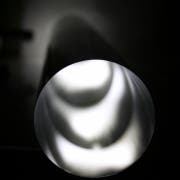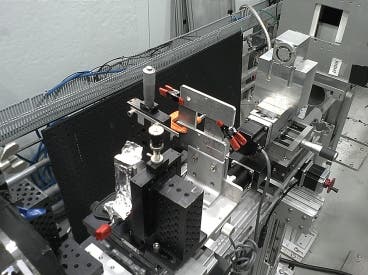
A joint project between scientists at NASA and MIT is focusing on creating a new kind of microscope that uses neutrons instead of beams of light or electrons to create high-resolution images. Since the subatomic particles are electrically neutral, such a microscope would allow scientists to peer through places otherwise inaccessible today, like inside metals even if these are in motion. Also, neutron instruments are also uniquely sensitive to magnetic properties and to lighter elements that are important in biological materials.
The concept of a neutron microscope isn’t entirely new, however other neutron instruments developed so far can be considered primitive to say the least. These are crude imaging systems that simply let light through a tiny opening, resulting in low-resolution images.
The team of researchers at MIT want to build something that rivals in quality current atomic force microscopes or electron microscopes. With this in mind, MIT postdoc Dazhi Liu, research scientist Boris Khaykovich, professor David Moncton, and four others are currently exploring an innovative idea that’s been on the table for more than 60 years.
“For neutrons, there have been no high-quality focusing devices,” Moncton says. “Essentially all of the neutron instruments developed over a half-century are effectively pinhole cameras.” But with this new advance, he says, “We are turning the field of neutron imaging from the era of pinhole cameras to an era of genuine optics.”
“The new mirror device acts like the image-forming lens of an optical microscope,” Liu adds.

The main challenge in developing a neutron optical device is that the particles minimally interact with matter, which makes it practically impossible to focus a beam of neutrons in the same way you would light or electrons. A basic means of manipulating neutron beams was expressed in the mid 1950s, even though the original idea was used for X-rays, involving concentric mirrors. Neutron beams interact weakly, much like X-rays, and can be focused by a similar optical system.
A neutron microscope
The instrument currently in development by the researchers uses several reflective cylinders nested one inside the other, so as to increase the surface area available for reflection. The resulting device could improve the performance of existing neutron imaging systems by a factor of about 50, the researchers say — allowing for much sharper images, much smaller instruments, or both.
So far, the team have digitized their concept, and have even created a small-version of the instrument as a proof of concept and demonstrated its performance using a neutron beam facility at MIT’s Nuclear Reactor Laboratory. Such a new instrument could be used to observe and characterize many kinds of materials and biological samples; other nonimaging methods that exploit the scattering of neutrons might benefit as well. Because the neutron beams are relatively low-energy, they are “a much more sensitive scattering probe,” Moncton says, for phenomena such as “how atoms or magnetic moments move in a material.”
Roger Pynn, a materials scientist at the University of California at Santa Barbara who was not involved in this research, says, “I expect it to lead to a number of breakthroughs in neutron imaging. … It offers the potential for some really new applications of neutron scattering — something that we haven’t seen for quite a while.”
The concept was outlined in a paper published in the journal Nature Communications.
Was this helpful?



